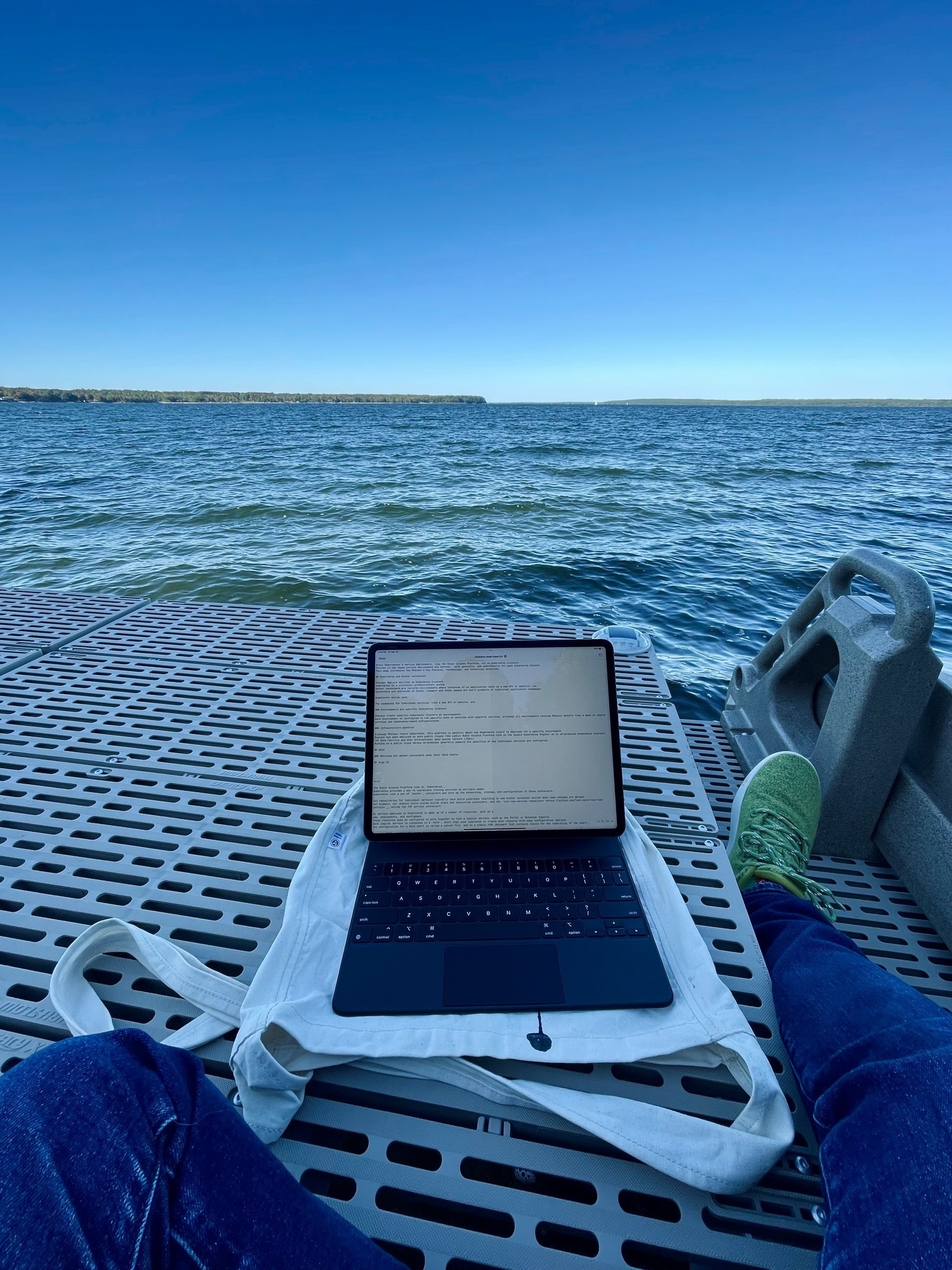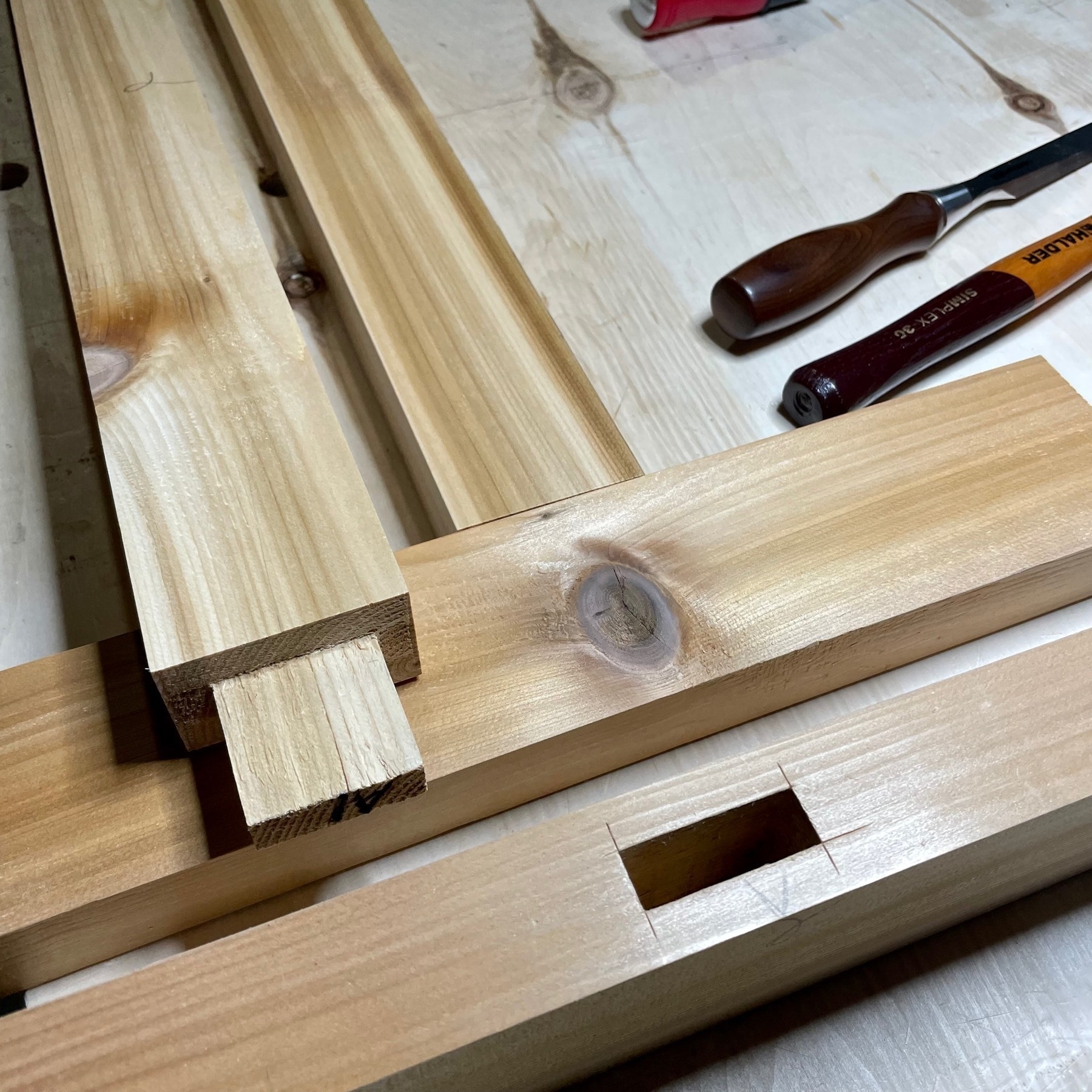Another new-ish gem in the Sphinx ecosystem, sphinxcontrib-mermaid makes it easy to drop Mermaid diagrams-as-code into docs, even Python docstrings.

The Sphinx documentation ecosystem is getting better and better. Latest example: autodoc_pydantic drops in for documenting Pydantic schemas. 🥳

Can I admit something? I haven’t yet given Taylor Swift Midnights a proper spin yet. The whole week has been Carly Rae Jepsen The Loneliest Time on repeat. What a gem.
September 2022 in review
Doing the work
September was all about shipping the new system for Rubin Observatory user guides in Documenteer. When I first started working on documentation for Rubin back in 2015, I always struggled with getting Sphinx documentation themes to do exactly what we wanted. For years I told my colleagues we’d fix all the issues — from typography to navigation to branding and more… eventually. Now I think we’ve finally got to a point where we are shipping polished documentation sites we can really be proud of. And the best part is I didn’t have to do the ground-up production of a custom Sphinx theme. Instead, we used the new and awesome PyData Sphinx Theme as an open source foundation. I really appreciate how the PyData folks have thought through the customization and branding use cases. For example, CSS custom properties make it a snap to apply Rubin’s brand colours in both light and dark themes. In the past this would have been a fraught task that yielded rather fragile CSS overrides.
What I spend most of the month though was productizing the user guide theme and configuration for the Rubin organization. Sphinx documentation projects use a Python module, called conf.py for configuration. To help Rubin projects use the same core configuration (and therefore benefit from consistent features and branding), we provide a configuration module in Documenteer that each project can import into its conf.py file:
from documenteer.conf.guide import *
Each project still needs to customize its Sphinx configuration in many ways. The technically simple way to do this is to have each project extend the core configuration in its conf.py file. But in some cases this is tricky because you need to customize existing lists and dictionary provided by the core configuration. It’s just awkward and error prone.
What we’ve done instead is introduced a file, called documenteer.toml, where a user can configure their project. The documenteer.conf.guide configuration merges this information with the Sphinx conf.py file for you. This lets us also do smart and semi-automated configuration. For instance, if a project is a Python package, the configuration can automatically pull out the project’s name, version, and repository URL.
[project]
title = "Documenteer"
copyright = "2015-2022 Association of Universities for Research in Astronomy, Inc. (AURA)"
[project.python]
package = "documenteer"
Overall, the documenteer.toml file means we can document and support a well defined set of configuration that each Rubin documentation project can manipulate.
Within Rubin Observatory, this is the sort or work that I find both satisfying and also really powerful from an organizational perspective. We’re able to take together elements of the open source ecosystem, edit and mix them together, and then provide and document a simple interface that other members and teams in the observatory can use in their own work. Rather than personally running all the documentation sites for the entire observatory, I can help the entire observatory create their own documentation. That’s how a small team like ours can have an outsized influence on an organization.
Pursuits
Amanda and I joined our friend couple on a hike to McCrae Lake Conservation Reserve, a popular site just north of us that’s the beginning of the Canadian shield country. The purpose of the trip was to take some wedding anniversary shots for our friends, and they turned out adorably cute. I also flew the drone and managed to capture a glimpse of a beaver near it’s lodge. I put the video up on YouTube.
I’m getting the hang of Lumafusion and even had some fun mixing some nature sounds and atmospheric sound tracks from the Audiio library. Video editing gets easier the more you do it, and I could see this being something I want to keep doing more.
Down in the workshop I’ve been slowly getting the sliding trays for the tool chest project. I got the tray slides in (made from white oak) and milled the pine stock for the trays themselves.
Reading
Finished reading The Thursday Murder Club by Richard Osman, After Dark by Haruki Murakami, and Make Time by Jake Knapp and John Zeratsky. Make Time is a quick book with loads of strategies to experiment with for getting better at focusing. Amanda and I started reading Husband Material by Alexis Hall together, which is the sequel to Boyfriend Material.
Heavy rotation
Amanda and I went to see Carly Rae Jepson play in Ontario Park in Toronto for her So Good tour. And it was so good. Every song of hers is a hit and she sounded amazing with her band. Bleachers opened for her and it was really cool to see Jack Antonoff for the first time.
On screen
We’ve been watching Only Murders in the Building, a hilarious take on the true crime podcast phenomenon with Steve Martin, Martin Short, and Selena Gomez. Enough said!
Embracing the last bits of summer up here.

I’ve been working on my tool chest this week and installed these two tier tray runners in white oak.


In retrospect I should have paid more attention to knots when I was roughing out the feet for these saw horses 🙃 The Wood Owl bits didn’t care though, but paring the mortise with a chisel was a little tricky. 🪚

I’ve started to use the pydata-sphinx-theme for our next generation of Rubin Observatory documentation sites. Still needs more tweaks, but it’s a great foundation 😍


August 2022 in review
August is an odd month. It’s both the height of summer while also feeling like the end of summer up here.
Doing the work
This month, I got back into the user interface for Times Square on the Rubin Science Platform (Squareone). Now when you pull request changes to a notebook repository, Times Square will not only verify that notebooks execute cleanly, but it will also give you a link to view the rendered notebooks (lsst-sqre/squareone#84. I think this feature will make publishing notebooks to the Times Square platform easier for Rubin staff, and will promote a pull request-based workflow.
On YouTube, I stumbled upon a video by Chantastic (of React podcast fame) about setting up Storybook with Next.js. Storybook is an app for developing and documenting components (such as React components) in isolated contexts. I’ve known of Storybook for a while in the context of learning about design systems (hat tip to Atomic Design by Brad Frost), but I’d always considered it to be something for big teams that had the resources to set up design documentation infrastructures for their web projects. Well, it turns out that not only is Storybook amazingly easy to drop into an existing React application, but it also solves some glaring problems in my web development workflow. React components can have behaviours that depend on state. Working with state while developing components can be, quite frankly, a pain. With Storybook, I can now inject state into “stories” about my components, and even adjust that state in real time to see how the component adapts. You can see this initial Storybook related work in lsst-sqre/squareone#87 and lsst-sqre/squareone#93.
Towards the end of the month, I moved on to another Rubin web project: theming Rubin’s Sphinx documentation sites. We’re trying out pydata-sphinx-theme, which features a three column design (navigation — content — content headers) and a novel top navigation bar. Because that top navigation bar is populated from the root-level toctree elements of a Sphinx site, adopting pydata-sphinx-theme can take some content re-organization. I’ve implemented the theme in Documenteer, and I really like the result. My pull request to set up a Rubin configuration for Sphinx documentation is lsst-sqre/documenteer#129
Pursuits
Down in the wood shop (I can’t decide whether I want to call it a wood shop or workshop or even a studio) I made solid progress on my tool chest, based on the boarded chest in the Anarchist’s Design Book by Schwarz. I used my combination plane to make rabbets and nailed the chest walls together with fantastically-strong 2" cut nails. Then I used the combination plane to make tongue-and-groove joints for the bottom boards and nailed each board on, again with the 2" cut nails. I slightly mis-aligned one board while nailing it, and after failing to pull out the nails, realized that these cut nails have fantastic holding strength. I’m not worried about the chest bottom falling out. Now I’ve pivoted to making a set of low Krenovian saw horses to temporarily hold the chest at a workable height before I make a permanent stand (which could be months, years, or decades down the road).
Amanda and I got out for a bit more kayaking, and I shot and edited together a short video of us paddling around. It’s kind of dorky, but it’s also astonishing to think that we now have consumer-grade flying cameras that can follow people around perfectly.
Reading
Finished reading Hard-Boiled Wonderland and the End of the World by Haruki Murakami, The Book of M by Peng Shepard, and Boyfriend Material by Alexis Hall. Resumed the Gabriel Allon series with Amanda: we’re on The Rembrandt Affair by Daniel Silva.
Heavy rotation
The tracking on my U-Turn Orbit turntable went for a (literal) loop this month. Something about the anti-skip being a bit too strong, I think? But I really enjoyed listening to records of She & Him’s Melt Away: A Tribute to Brian Wilson and Lizzo’s Special. I must have had Sylvan Esso’s No Rules Sandy on repeat through most work days. And after watching Dua Lipa’s episode on Song Exploder, I dug a bit into her Future Nostalgia album.
Seven bees in this one sneeze weed. Our rewilding is working!

Finished reading: The Book Of M by Peng Shepherd 📚 It felt coincidental to read this right after The Hard-boiled Wonderland and the End of the World, with both speculating on the ideas of one’s shadow holding one’s soul/memories. A really lovely book with a similar slow slide into magic as Peng’s other book, The Cartographers.
A sunrise from a couple weeks ago that I got around to HDR stacking.

I’m kicking the tires on VS Code for web dev (vim+tmux user since… gosh, when did TextMate start to fall apart?). This tip for navigating splits with the keyboard is clutch → www.ryanchapin.com/vscode-ke…
Penetanguishene

I nailed together the sides of my tool chest. Used 6d (2 inch) cut nails with 2 mm pilot holes. Lots of clamping helped keep things aligned and prevented the nails from splitting the boards. 🪚


Finished reading: Boyfriend Material by Alexis Hall 📚 I sped-read this over the weekend on Amanda’s recommendation. Devestatingly adorable and full of good feels. Looking forward to the sequel!
Amanda’s purple coneflowers are a hit with the bees.

Shopping in the lettuce aisle.

Finished reading: The Hard-boiled Wonderland and the End of the World (Penguin International Writers) by Haruki Murakami. Found this book from a Carly Rae Jepson insta post (yes!) and glad I dove in to this sci-fi mediation on the mind. 📚
